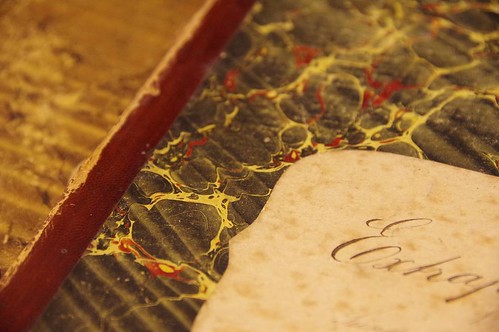Implanted islets is associated with improved transplantation outcome in the current study. Thus, when compared to conventional islet 3PO biological activity pellets, both methods to maintain islet morphology and size enhanced the rate and frequency of reversion to normoglycaemia in STZ-induced diabetic mice and showed significant improvements in overall glycemic control. Notably, we observed an initial decrease in blood glucose in alltation, demonstrating that dispersing islets within matrigel is able to maintain islet size and morphology more closely to endogenous pancreatic islets than that seen in pelleted islet grafts. As shown in Figure 5, insulin immunostaining of pelleted islet grafts showed a single large amorphous endocrine mass in the majority of sections analysed (Figure 5a), whereas in the islet-matrigel transplants there was very little evidence of any fusion between individual islets with the spherical outline of individual islets still clearly discernible (Figure 5b). The endocrine cell distribution was disorganised in pelleted islets grafts, with glucagon-positive alpha cells distributed throughout the aggregated endocrine mass (Figure 5c), confirming our observations demonstrated in Figure 1. Similarly to dispersed islet grafts; the normal core-mantle segregation of alpha cells was maintained in matrigel-implanted islets (Figure 5d). Although the total endocrine area (immunostained with insulin) was comparable between mice transplanted with pelleted islets and those receiving matrigel-implanted islets (Figure 5e), the graft morphology was clearly different. Quantification of islet fusion showed that the average area of each individual endocrine aggregate in the graft sections of matrigel-implanted mice was ,15 of  that seen in pelleted islet grafts (Figure 5f), indicating that this DprE1-IN-2 represents a reliable method for preventing islet fusion. Large areas of endocrine tissue were devoid of ECs in the grafts consisting of pelleted islets (Figure 6a), whereas ECs were distributed throughout the endocrine tissue in grafts consisting of matrigel-implanted islets (Figure 6b). The vascular density of the endocrine tissue in grafts consisting of matrigel-implanted islets was significantly elevated compared to control pelleted islet grafts (Figure 6c). There were no differences between the vascularisation of matrigel implanted islets and dispersed islets (973.30636.83 and 1,143.896135.98 ECs/mm2, p.0.2, n = 4), nor were there any differences in the average area of individual endocrine aggregates per graft section (22,14463,777 and 23,63964,352 mm2, p = 0.8, n = 4). However, the total endocrine area per graft section was significantly higher in matrigel-implanted islet grafts than dispersed islet grafts (97,458616,348 and 35,56467,898 mm2, n = 4, p,0.05), indicating that manual dispersion of islets ensured that individual islets were spread out over a larger area beneath the kidney capsule than matrigel-implanted islets that were less 12926553 spread out due to the solid matrigel support.Maintenance of Islet MorphologyFigure 5. Morphology of matrigel-implanted islets. Representative sections of pelleted islet grafts (a) and matrigel-implanted islets (b) at one month post transplantation beneath the kidney capsule, immunostained with insulin antibodies, original magnification 6100, scale bars are 100 mm. A. Pelleted islet graft representing the large endocrine aggregates formed from the fusion of individual islets. B. Matrigel-implanted islet graft where the rounded.Implanted islets is associated with improved transplantation outcome in the current study. Thus, when compared to conventional islet pellets, both methods to maintain islet morphology and size enhanced the rate and frequency of reversion to normoglycaemia in STZ-induced diabetic mice and showed significant improvements in overall glycemic control. Notably, we observed an initial decrease in blood glucose in alltation, demonstrating that dispersing islets within matrigel is able to maintain islet size and morphology more closely to endogenous pancreatic islets than that seen in pelleted islet grafts. As shown in Figure 5, insulin immunostaining of pelleted islet grafts showed a single large amorphous endocrine mass in the majority of sections analysed (Figure 5a), whereas in the islet-matrigel transplants there was very little evidence of any fusion between individual islets with the spherical outline of individual islets still clearly discernible (Figure 5b). The endocrine cell distribution was disorganised in pelleted islets grafts, with glucagon-positive alpha cells distributed throughout the aggregated endocrine mass (Figure 5c), confirming our observations demonstrated in Figure 1. Similarly to dispersed islet grafts; the normal core-mantle segregation of alpha cells was maintained in matrigel-implanted islets (Figure 5d). Although the total endocrine area (immunostained with insulin) was comparable between mice transplanted with pelleted islets and those receiving matrigel-implanted islets (Figure 5e), the graft morphology was clearly different. Quantification of islet fusion showed that the average area of each individual endocrine aggregate in the graft sections of matrigel-implanted mice was ,15 of that seen in pelleted islet grafts (Figure 5f), indicating that this represents a reliable method for preventing islet fusion. Large areas of endocrine tissue were devoid of ECs in the grafts consisting of pelleted islets (Figure 6a), whereas ECs were distributed throughout the endocrine tissue in grafts consisting of matrigel-implanted islets (Figure 6b). The vascular density of the endocrine tissue in grafts consisting of matrigel-implanted islets was significantly elevated compared to control pelleted islet grafts (Figure 6c). There were no differences between the vascularisation of matrigel implanted islets and dispersed islets (973.30636.83 and 1,143.896135.98 ECs/mm2, p.0.2, n = 4), nor were there any
that seen in pelleted islet grafts (Figure 5f), indicating that this DprE1-IN-2 represents a reliable method for preventing islet fusion. Large areas of endocrine tissue were devoid of ECs in the grafts consisting of pelleted islets (Figure 6a), whereas ECs were distributed throughout the endocrine tissue in grafts consisting of matrigel-implanted islets (Figure 6b). The vascular density of the endocrine tissue in grafts consisting of matrigel-implanted islets was significantly elevated compared to control pelleted islet grafts (Figure 6c). There were no differences between the vascularisation of matrigel implanted islets and dispersed islets (973.30636.83 and 1,143.896135.98 ECs/mm2, p.0.2, n = 4), nor were there any differences in the average area of individual endocrine aggregates per graft section (22,14463,777 and 23,63964,352 mm2, p = 0.8, n = 4). However, the total endocrine area per graft section was significantly higher in matrigel-implanted islet grafts than dispersed islet grafts (97,458616,348 and 35,56467,898 mm2, n = 4, p,0.05), indicating that manual dispersion of islets ensured that individual islets were spread out over a larger area beneath the kidney capsule than matrigel-implanted islets that were less 12926553 spread out due to the solid matrigel support.Maintenance of Islet MorphologyFigure 5. Morphology of matrigel-implanted islets. Representative sections of pelleted islet grafts (a) and matrigel-implanted islets (b) at one month post transplantation beneath the kidney capsule, immunostained with insulin antibodies, original magnification 6100, scale bars are 100 mm. A. Pelleted islet graft representing the large endocrine aggregates formed from the fusion of individual islets. B. Matrigel-implanted islet graft where the rounded.Implanted islets is associated with improved transplantation outcome in the current study. Thus, when compared to conventional islet pellets, both methods to maintain islet morphology and size enhanced the rate and frequency of reversion to normoglycaemia in STZ-induced diabetic mice and showed significant improvements in overall glycemic control. Notably, we observed an initial decrease in blood glucose in alltation, demonstrating that dispersing islets within matrigel is able to maintain islet size and morphology more closely to endogenous pancreatic islets than that seen in pelleted islet grafts. As shown in Figure 5, insulin immunostaining of pelleted islet grafts showed a single large amorphous endocrine mass in the majority of sections analysed (Figure 5a), whereas in the islet-matrigel transplants there was very little evidence of any fusion between individual islets with the spherical outline of individual islets still clearly discernible (Figure 5b). The endocrine cell distribution was disorganised in pelleted islets grafts, with glucagon-positive alpha cells distributed throughout the aggregated endocrine mass (Figure 5c), confirming our observations demonstrated in Figure 1. Similarly to dispersed islet grafts; the normal core-mantle segregation of alpha cells was maintained in matrigel-implanted islets (Figure 5d). Although the total endocrine area (immunostained with insulin) was comparable between mice transplanted with pelleted islets and those receiving matrigel-implanted islets (Figure 5e), the graft morphology was clearly different. Quantification of islet fusion showed that the average area of each individual endocrine aggregate in the graft sections of matrigel-implanted mice was ,15 of that seen in pelleted islet grafts (Figure 5f), indicating that this represents a reliable method for preventing islet fusion. Large areas of endocrine tissue were devoid of ECs in the grafts consisting of pelleted islets (Figure 6a), whereas ECs were distributed throughout the endocrine tissue in grafts consisting of matrigel-implanted islets (Figure 6b). The vascular density of the endocrine tissue in grafts consisting of matrigel-implanted islets was significantly elevated compared to control pelleted islet grafts (Figure 6c). There were no differences between the vascularisation of matrigel implanted islets and dispersed islets (973.30636.83 and 1,143.896135.98 ECs/mm2, p.0.2, n = 4), nor were there any  differences in the average area of individual endocrine aggregates per graft section (22,14463,777 and 23,63964,352 mm2, p = 0.8, n = 4). However, the total endocrine area per graft section was significantly higher in matrigel-implanted islet grafts than dispersed islet grafts (97,458616,348 and 35,56467,898 mm2, n = 4, p,0.05), indicating that manual dispersion of islets ensured that individual islets were spread out over a larger area beneath the kidney capsule than matrigel-implanted islets that were less 12926553 spread out due to the solid matrigel support.Maintenance of Islet MorphologyFigure 5. Morphology of matrigel-implanted islets. Representative sections of pelleted islet grafts (a) and matrigel-implanted islets (b) at one month post transplantation beneath the kidney capsule, immunostained with insulin antibodies, original magnification 6100, scale bars are 100 mm. A. Pelleted islet graft representing the large endocrine aggregates formed from the fusion of individual islets. B. Matrigel-implanted islet graft where the rounded.
differences in the average area of individual endocrine aggregates per graft section (22,14463,777 and 23,63964,352 mm2, p = 0.8, n = 4). However, the total endocrine area per graft section was significantly higher in matrigel-implanted islet grafts than dispersed islet grafts (97,458616,348 and 35,56467,898 mm2, n = 4, p,0.05), indicating that manual dispersion of islets ensured that individual islets were spread out over a larger area beneath the kidney capsule than matrigel-implanted islets that were less 12926553 spread out due to the solid matrigel support.Maintenance of Islet MorphologyFigure 5. Morphology of matrigel-implanted islets. Representative sections of pelleted islet grafts (a) and matrigel-implanted islets (b) at one month post transplantation beneath the kidney capsule, immunostained with insulin antibodies, original magnification 6100, scale bars are 100 mm. A. Pelleted islet graft representing the large endocrine aggregates formed from the fusion of individual islets. B. Matrigel-implanted islet graft where the rounded.